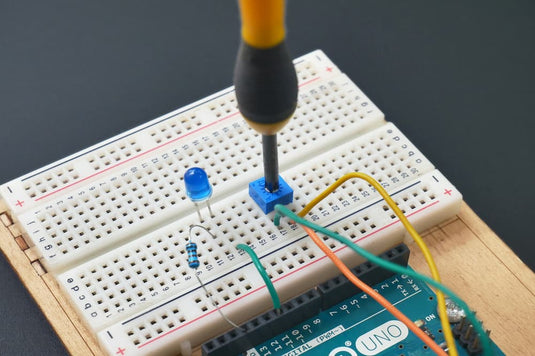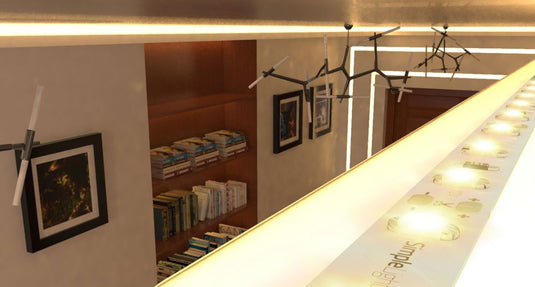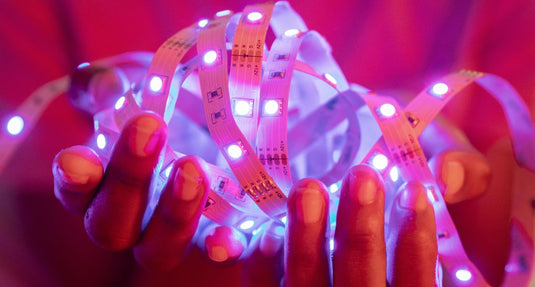An LED driver regulates the power which is required for all LED lights. The diodes found in LED drivers have low energy consumption and help light devices with a long life span.
In electronics, an LED driver is an electrical circuit that powers a light-emitting diode. In order to get the desired brightness, the circuit must be able to provide a sufficient current of light. Read on to learn more about LED drivers, including what an LED driver does, how to test an LED driver, and the different types.
What Does an LED Driver Do?
In summary, LED drivers keep both the voltage and current flowing properly through an LED circuit at the right level and speed. Every LED light requires a driver - and if it doesn't have one, it won't work.
LED drivers help keep the power supply working constantly by compensating for changes in both conductivity and temperature. This helps to prevent LED lights from overheating, flickering and overall performing badly.
The great thing about LED drivers is that they can detect a drastic temperature change and have a thermal shutdown protection feature - meaning it cuts the lighting out before it gets too hot, preventing damage and accidents.
External vs Internal Drivers
LED drivers are either used externally or internally - meaning it’s positioned within the bulb assembly. Let's go through the differences between them both.
External Drivers
External drivers are separate from LEDs and are usually used for outdoor, commercial and street lighting.
External drivers provide LED light bulbs with the right amount of electricity to function properly and they can be easily replaced compared to internal drivers.
If an external driver fails or breaks, they are easy to replace or repair and they’re relatively inexpensive to buy.
Internal Drivers
Normally found in domestic light bulbs, internal drivers are housed in the same case as the LEDs.
Internal drivers are integrated within a light bulb, making them harder to replace. The easiest thing to do if an internal driver breaks is to buy a brand new bulb altogether.
Different Types of LED Drivers
There’s a wide range of different LED drivers available to buy. Finding the right LED driver comes down to what you’re using it for and what type of light fixture it’s going to be supporting.
Let's go through some popular LED drivers that people buy.
Dimmable LED Drivers
Offering superior lighting control, dimming LED drivers are low voltage and keep wires hidden away - allowing you to control everything right at the switch.
Dimming LED drivers work efficiently by reducing the amount of power required by the light, therefore causing the dimming effect.
Mini LED Drivers
These come in handy for smaller lights such as string or strip LED lights. String lights are used by many households and are more commonly used in Christmas trees, bedrooms or just simply as an added home accessory.
They’re great for mood lighting effects and creating a cosy atmosphere.
High Power LED Drivers
High power models are widely deployed in larger lighting systems, like commercial and public spaces that require excellent visibility.
To ensure smooth operation, the type of lights that are used in these particular settings need high-power LED drives to be able to run accordingly.
How to Test an LED Driver
If you’re unsure whether or not your LED driver isn’t working anymore, you could run it through a test using a voltmeter.
Using a voltmeter allows you to accurately measure the output voltage of the driver you’re testing on. Constant current LED drivers have an exceedingly high voltage, so be more cautious with these.
If an LED driver has failed, there will be zero volts on the output. This means your driver is likely to have a short somewhere on the circuit.
Disconnecting the driver from whichever light it’s powering and leaving it for five minutes will allow the capacitors to discharge, hopefully resulting in the circuit re-setting itself.
What Could Cause an LED Driver to Fail?
If your LED driver stops operating, it could be because it’s been working at a high temperature. Drivers include a feature that detects a build-up of heat, so it likely shut itself down.
Although this is the most common reason why LED drivers fail, other battery-like components called electrolytic capacitors can also be the cause of death.
A driver is ultimately the heart of an LED light. The life span of most drivers ranges between 10,000 to over 50,000 hours, depending on design features and overall quality.
How to Choose the Right LED Driver
We recommend buying an LED driver that’s got a wattage capability at least 10% higher than the wattage of the actual LED light itself. This means the lights can perform to their best ability.
An example is if you were to buy LED strip lights that measure around five meters in length and require 30 watts, then we would say it’s best to use a driver with an output of 33 watts or more.
Once you’re familiar with the mathematical side of LED lights, finding the right LED driver will be easy.
Drivers at LED Supplier
Whether you’re wanting to find LED lights for your bathroom, kitchen, commercial space or garden - it’s crucial to have the right LED driver to make sure they will last.
LED Supplier has a wide range of high-quality drivers that are cost-effective, energy-efficient and environmentally friendly. We know that our products will last and can assure our LED drivers have a long life span.
Most of our LED drivers have built-in safety features and are supplied with fixing screws for easy installation. We provide key information on our product listings to make sure finding the right LED driver can be easier than ever.




